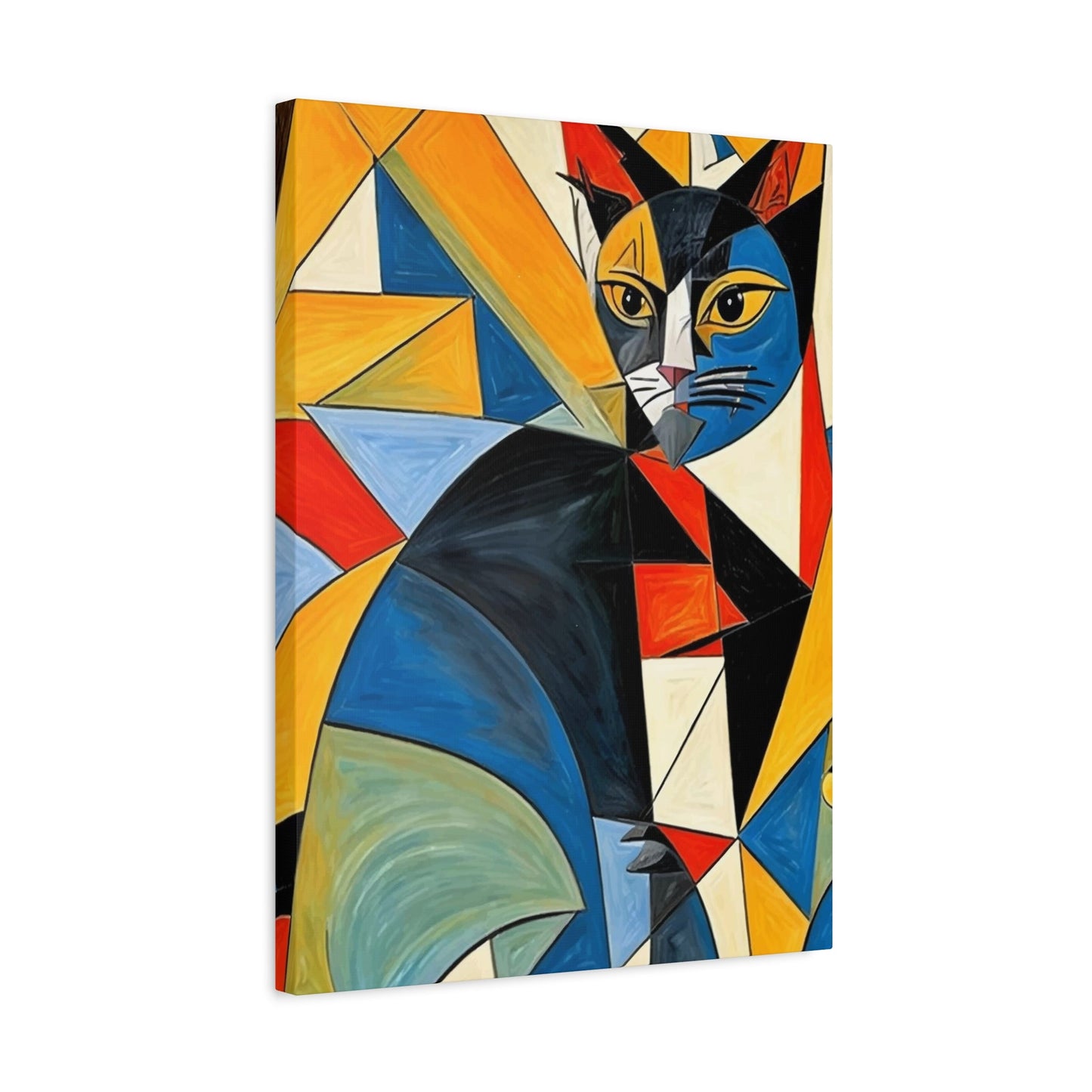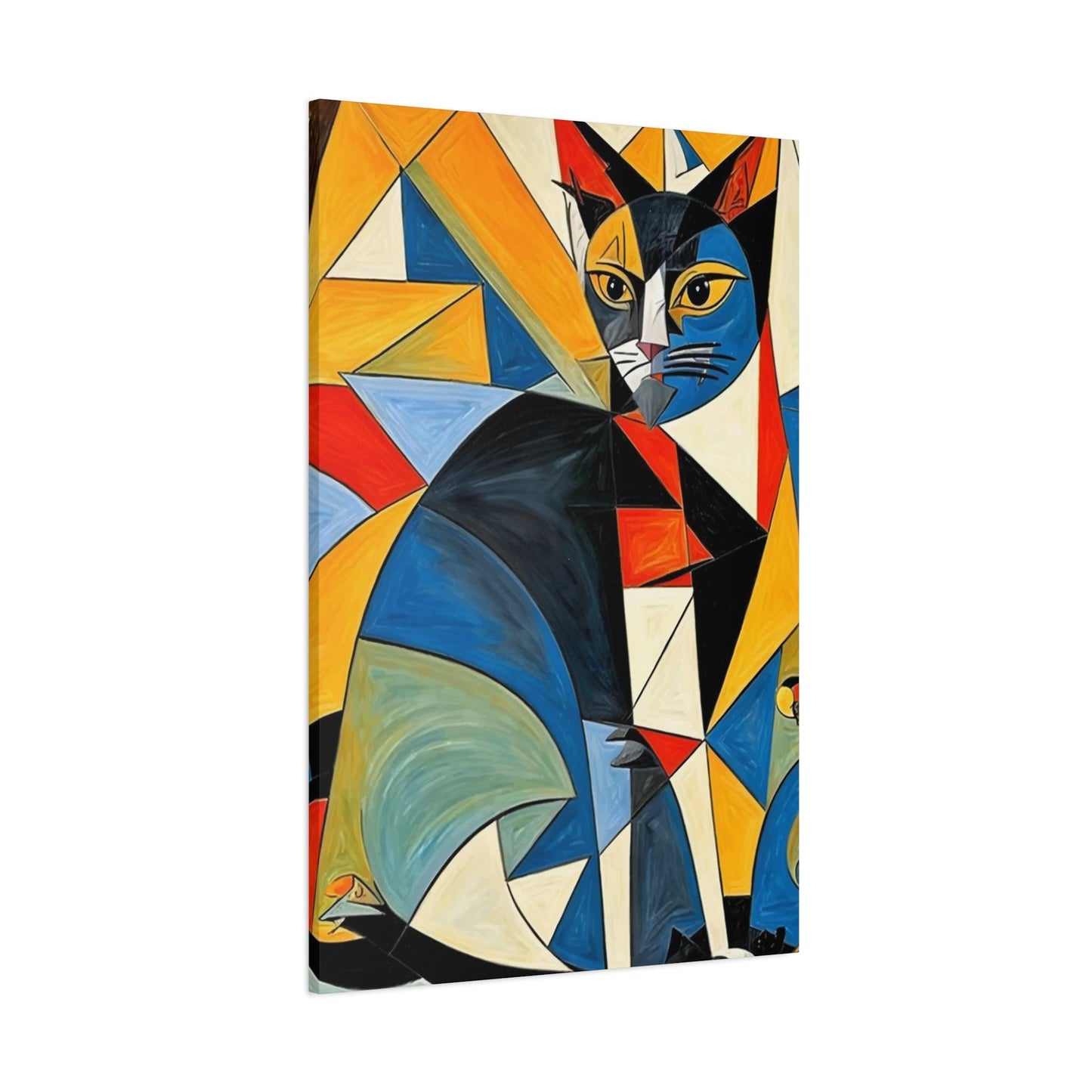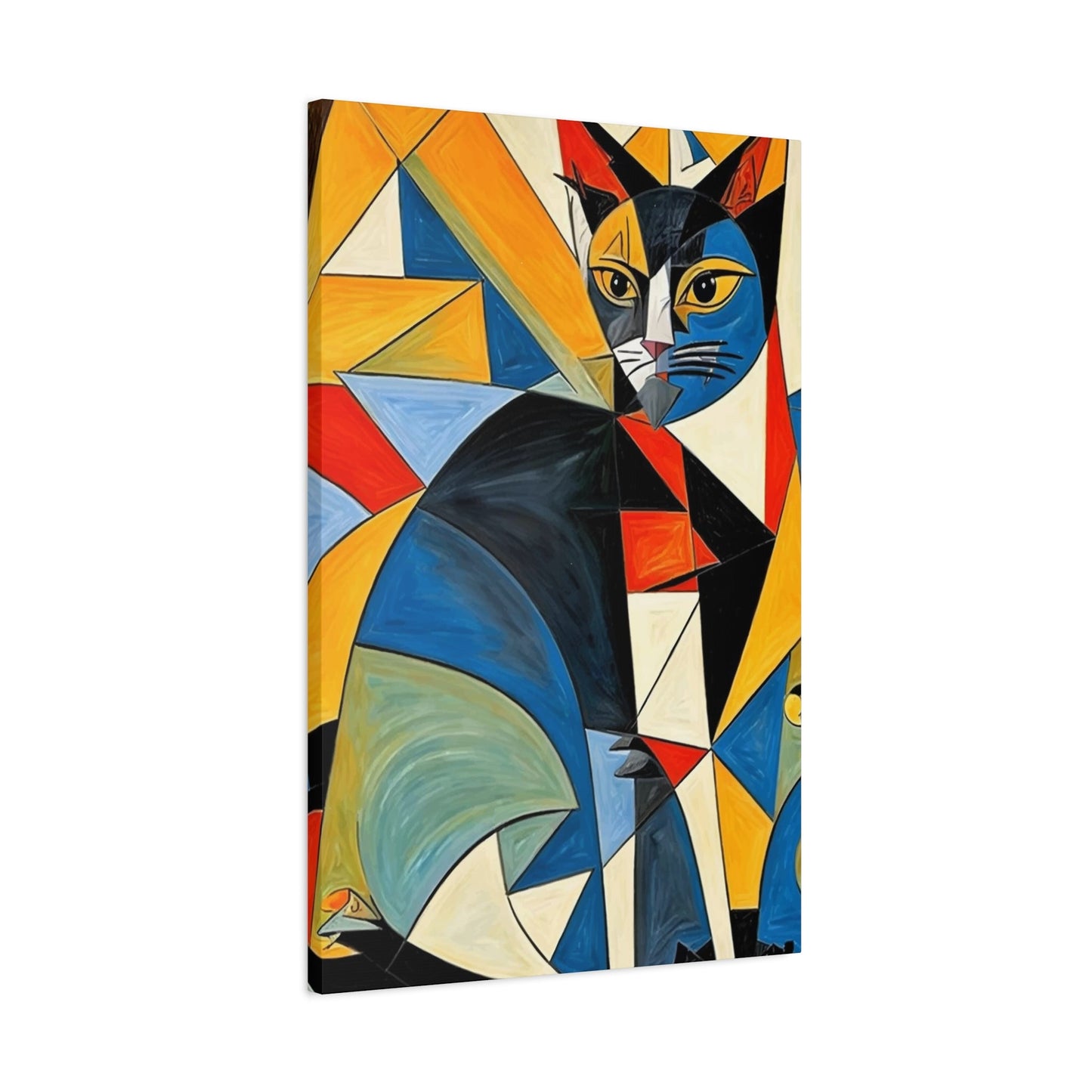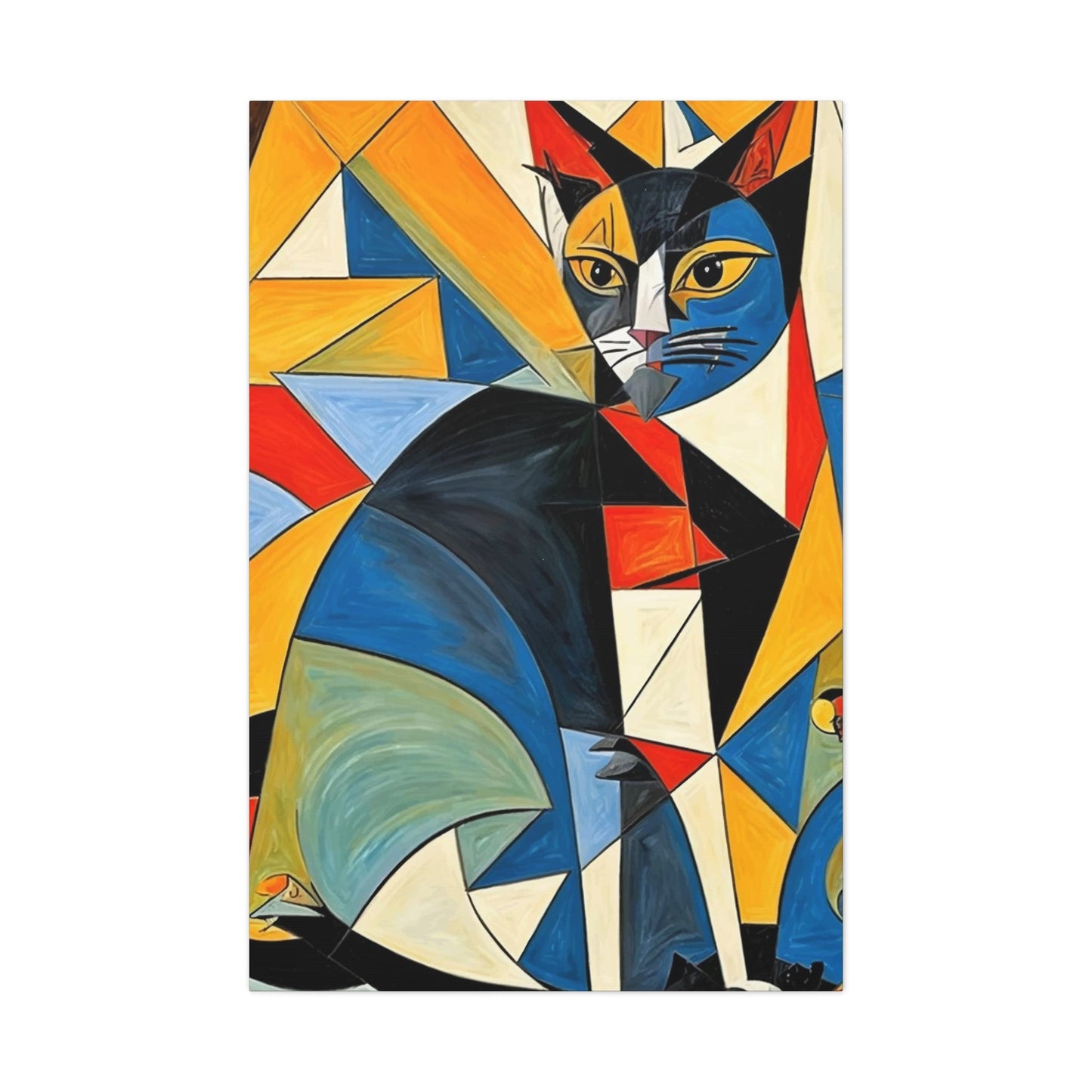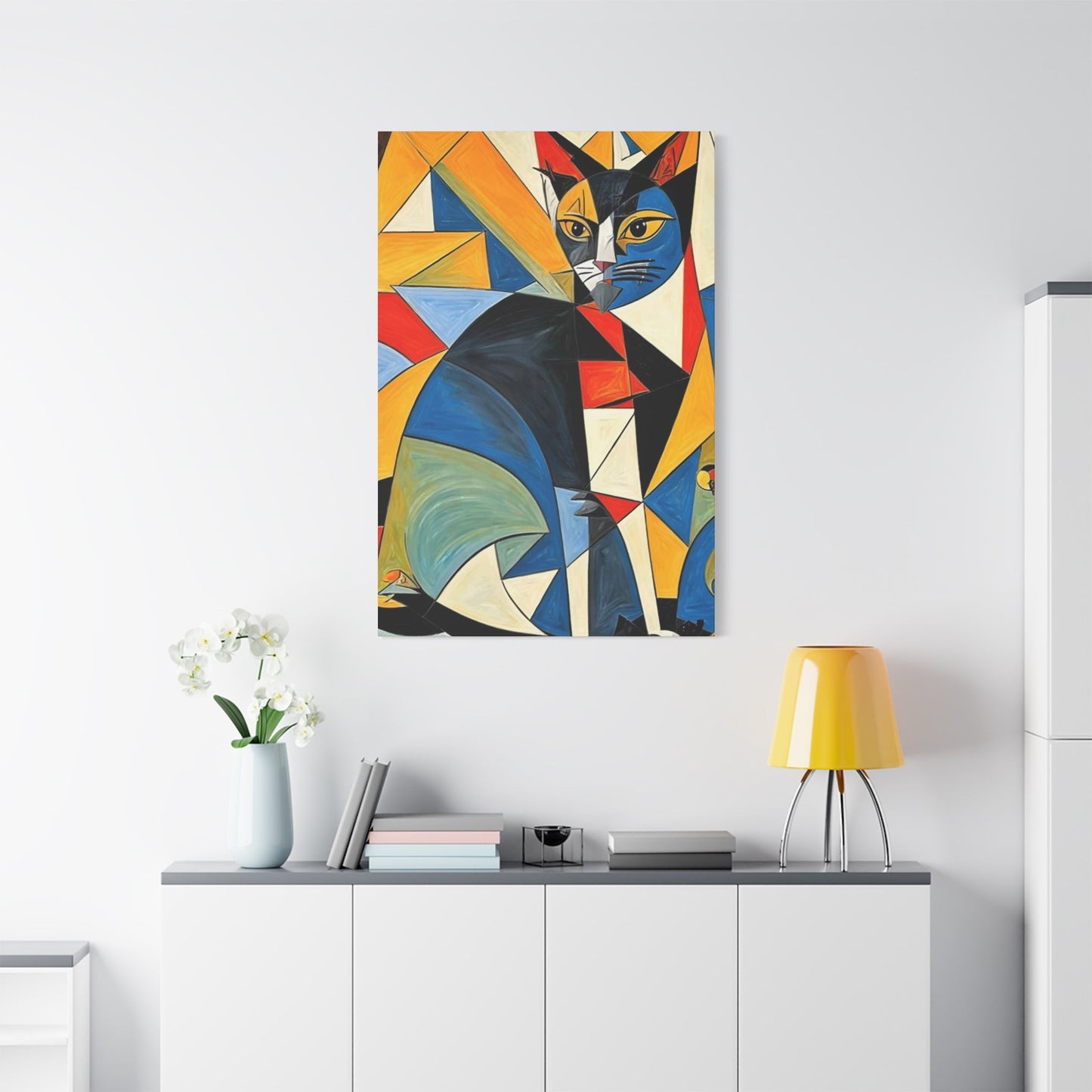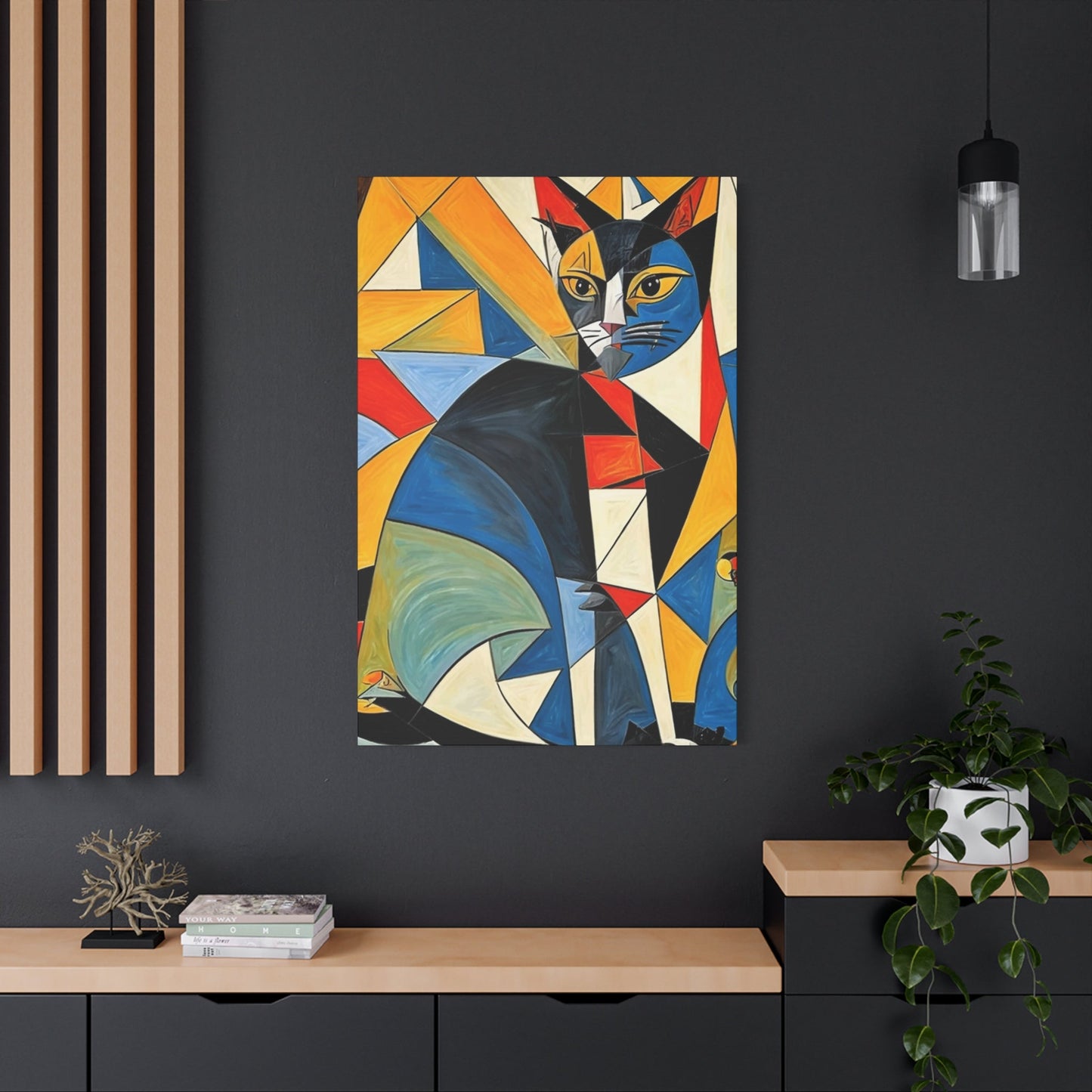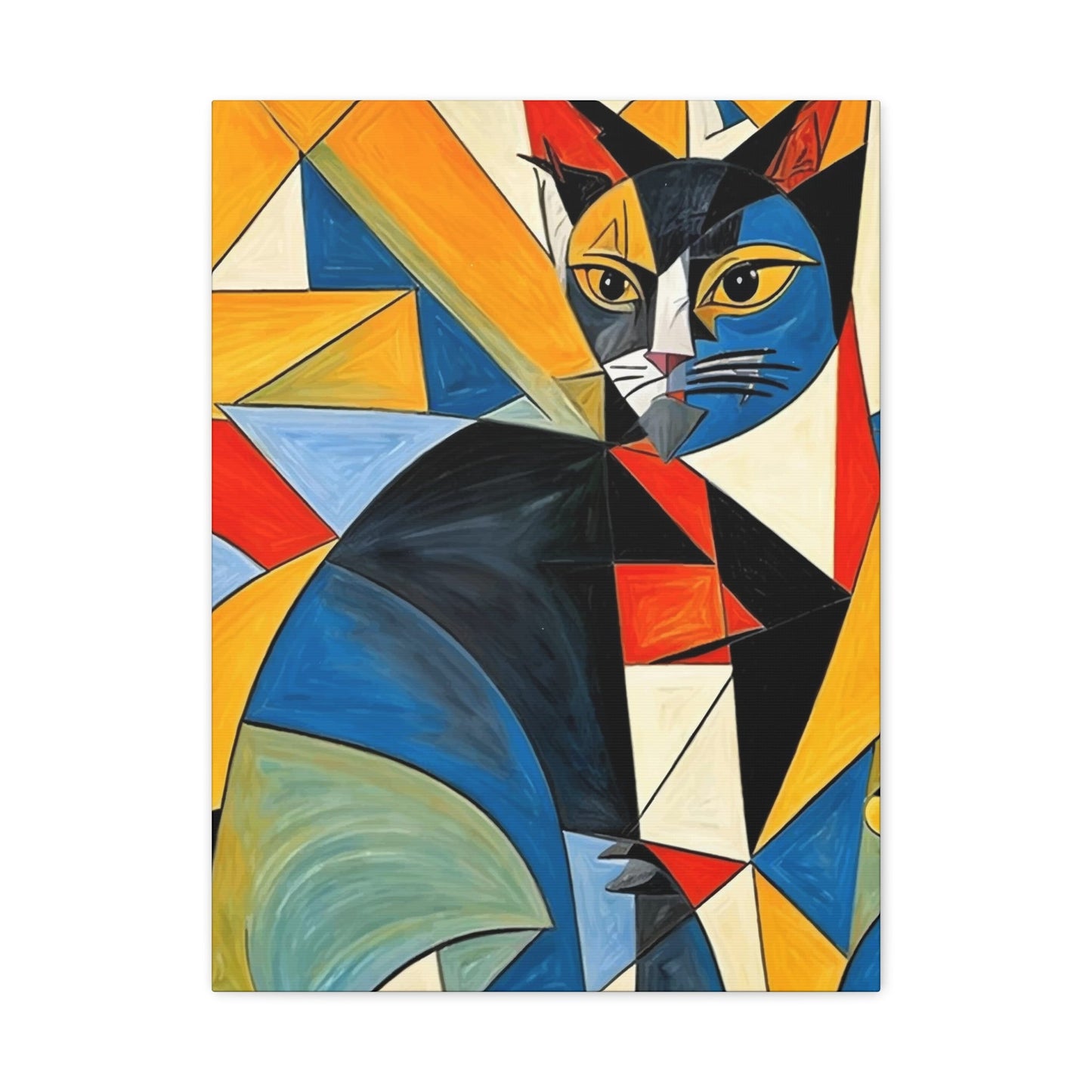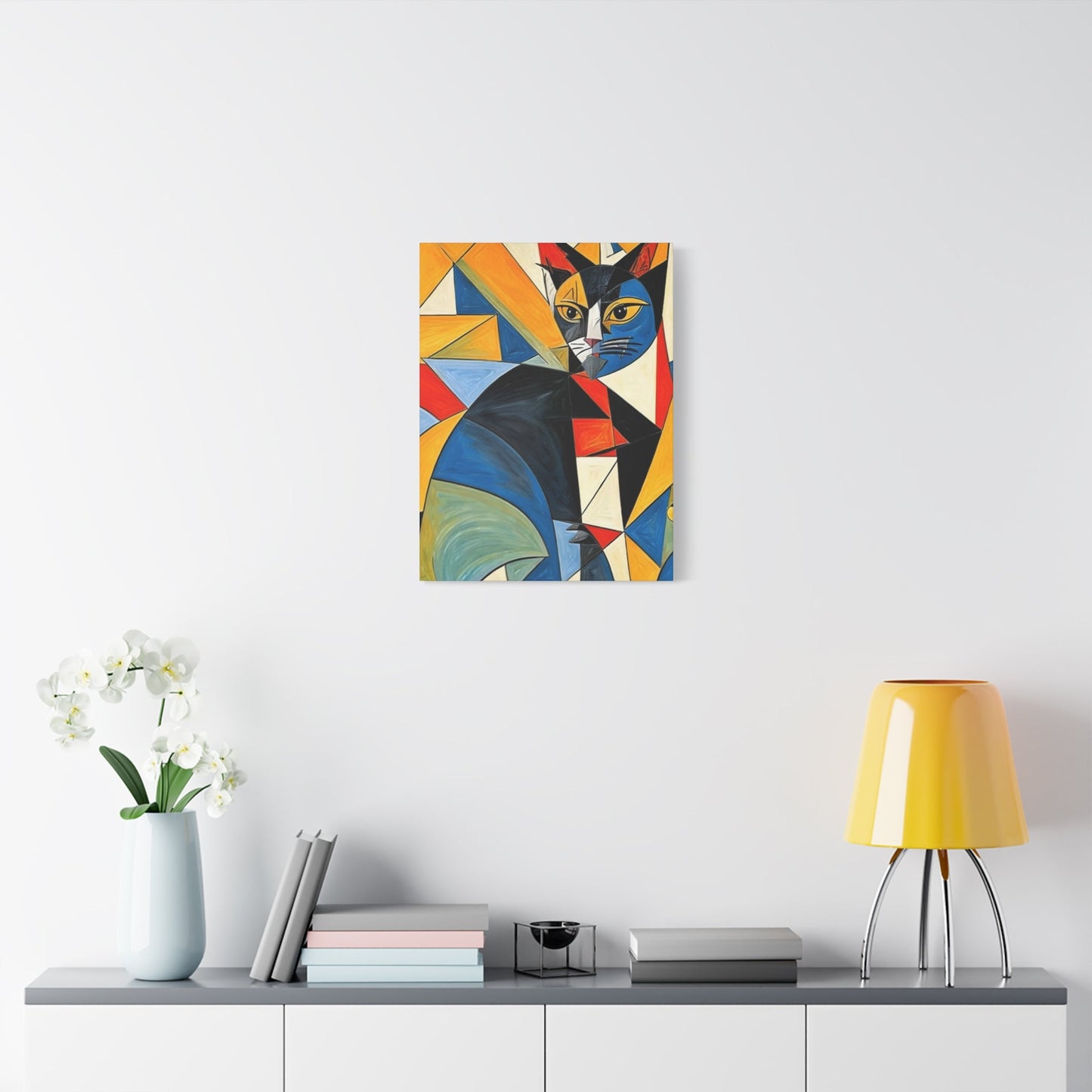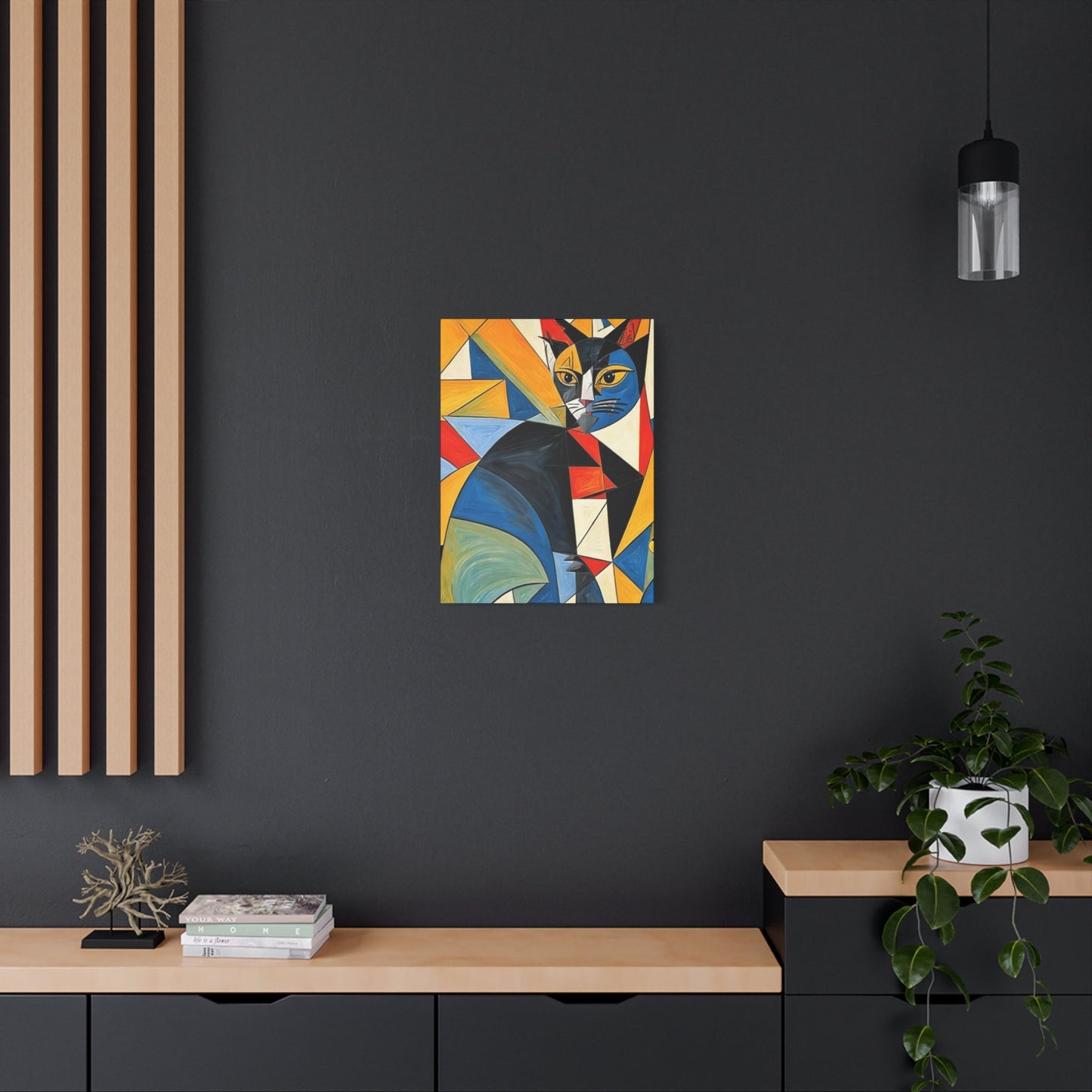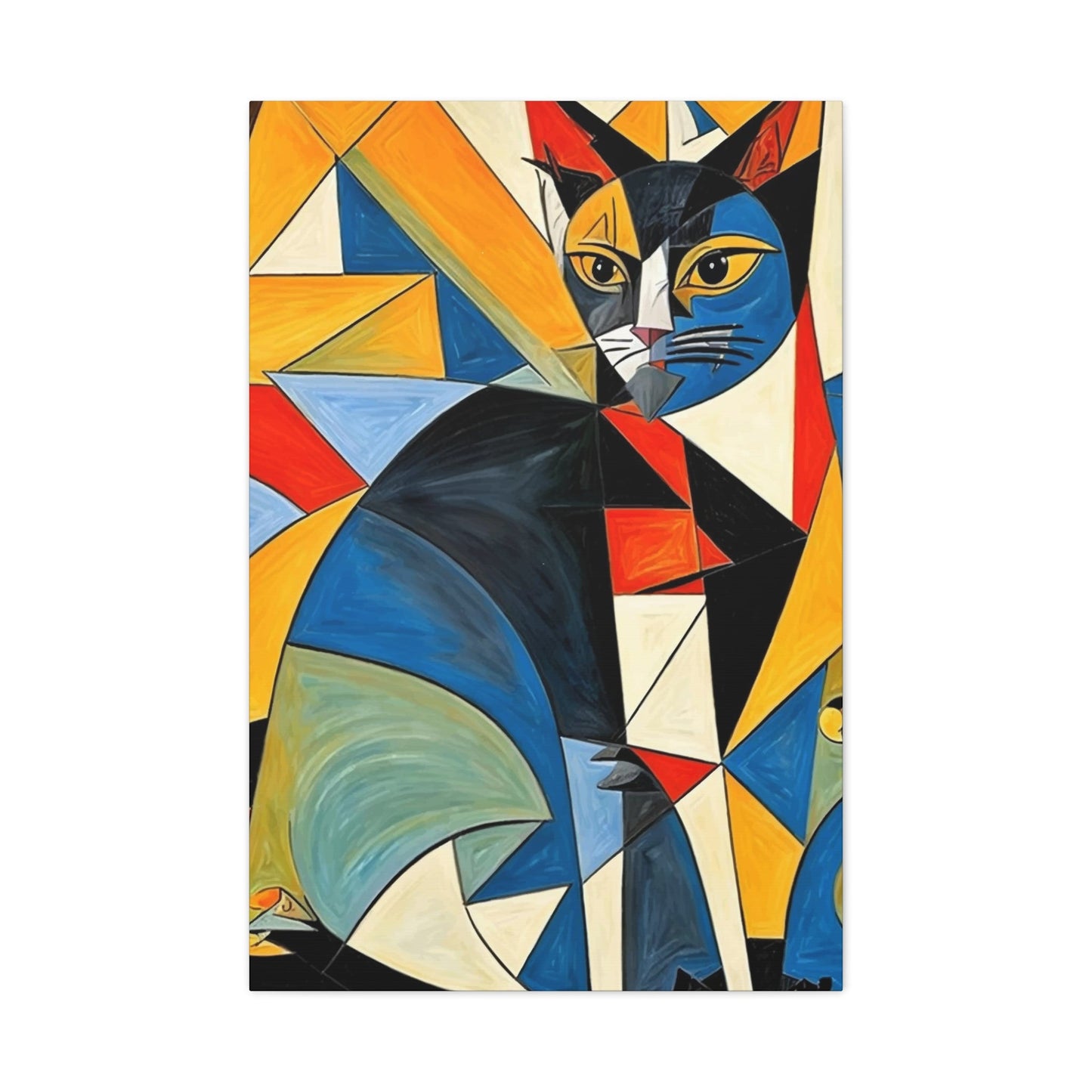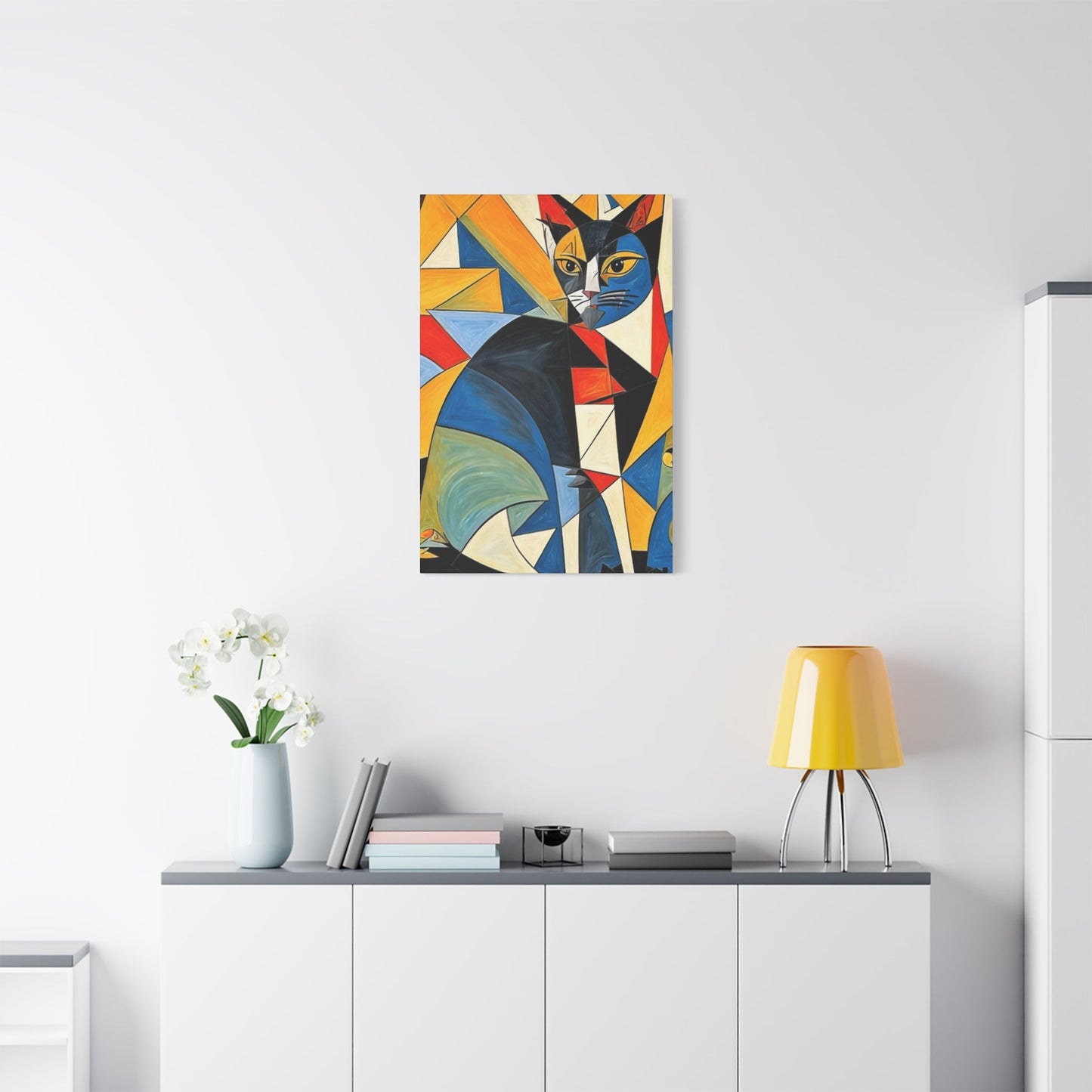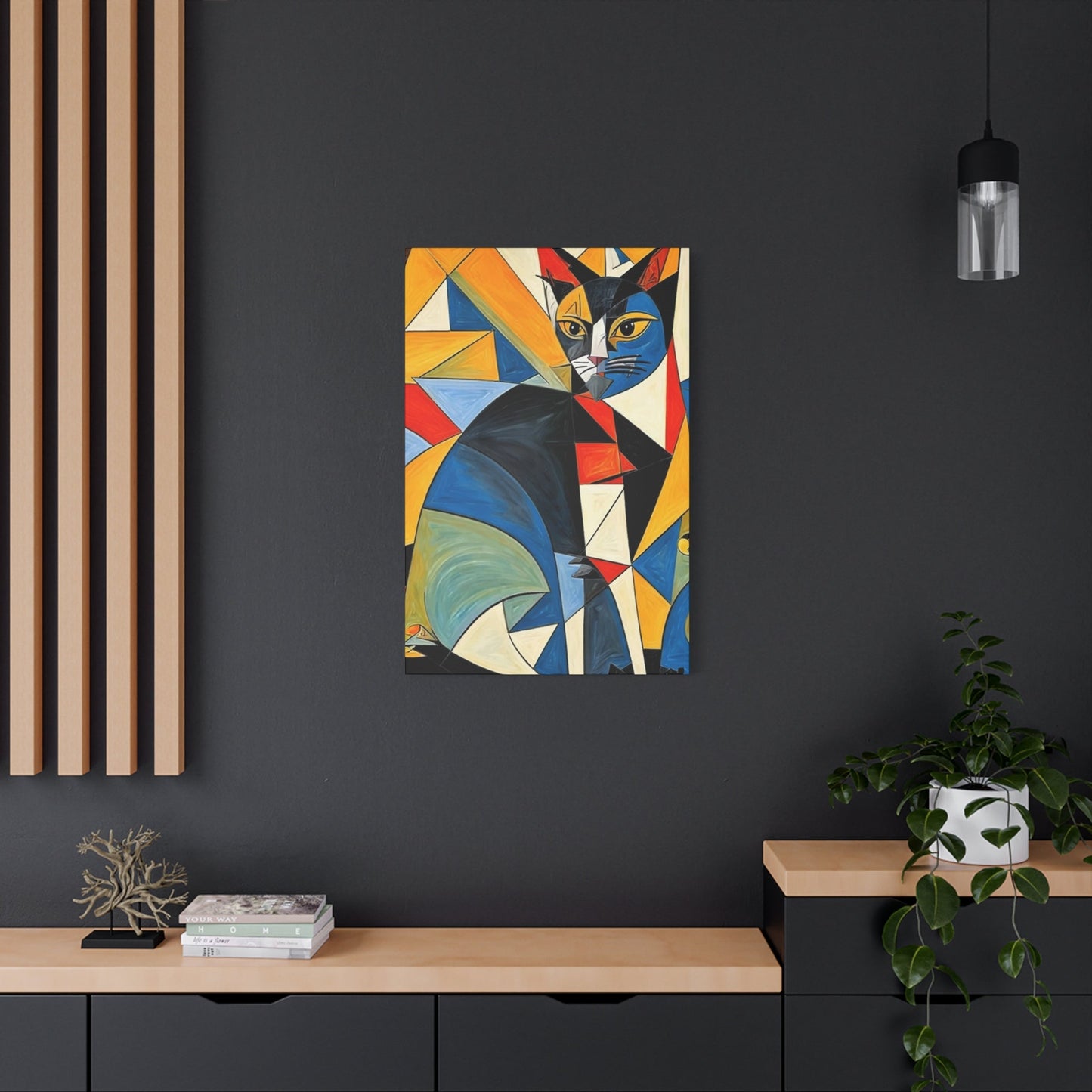Picasso's Revolutionary Cubism: Essential Wall Art Inspiration from Museum Collections
The artistic revolution that Pablo Picasso ignited through Cubism continues to influence contemporary wall art and museum exhibitions worldwide. This groundbreaking movement, which emerged in the early 20th century, fundamentally changed how we perceive visual representation and spatial relationships in art. From prestigious museum collections to modern homes, Picasso's Cubist principles have become integral to wall art design, offering endless inspiration for both collectors and artists.
Discovering Cubist Masterpieces That Revolutionized Wall Art
Pablo Picasso's journey into Cubism began around 1907, marking a dramatic departure from traditional representational art. This revolutionary approach deconstructed objects and figures into geometric forms, presenting multiple perspectives simultaneously within a single composition. The impact of this innovation extends far beyond museum walls, influencing contemporary wall art design and decoration approaches across diverse settings.
Museums worldwide house extensive collections of Cubist works that demonstrate the evolution of this movement. These institutions serve as treasure troves for art enthusiasts seeking to understand how geometric abstraction can transform visual perception. The systematic deconstruction of form that characterizes Cubism offers valuable insights for modern wall art applications, providing frameworks for creating dynamic, engaging visual experiences.
The fundamental principles of Cubism involve breaking down subjects into basic geometric shapes, reassembling them in abstract compositions that challenge traditional perspective. This approach creates visual tension and movement, qualities that translate exceptionally well to wall art applications. Contemporary designers frequently draw upon these principles to create compelling visual narratives that engage viewers through their complexity and innovation.
Museum collections reveal how Picasso's Cubist experiments progressed from analytical explorations to synthetic compositions. Early analytical Cubist works demonstrate meticulous deconstruction of form, while later synthetic pieces incorporate collage elements and broader color palettes. These evolutionary stages provide rich source material for wall art designers seeking to incorporate Cubist elements into their compositions.
The geometric fragmentation characteristic of Cubism creates dynamic visual rhythms that energize architectural environments. When translated to wall art applications, these rhythms can transform static surfaces into engaging focal points that draw viewers into deeper contemplation. The interplay between positive and negative forms creates depth and movement, essential elements for compelling wall art design.
The Revolutionary Birth of Cubist Movement Through Picasso's Vision
The emergence of Cubism represents one of the most significant paradigm shifts in art history, fundamentally altering how artists approach representation and visual communication. Pablo Picasso, along with Georges Braque, pioneered this revolutionary movement that would influence generations of artists and continues to inspire wall art creators today. The movement's origins can be traced to Picasso's encounter with African art and his desire to move beyond traditional European artistic conventions.
During the formative years of Cubism, Picasso experimented with reducing complex forms to their essential geometric components. This process involved careful analysis of how light, shadow, and perspective could be reimagined through angular, fragmented compositions. The resulting artworks challenged viewers to engage actively with the visual experience, constructing meaning from seemingly disparate elements assembled within unified compositions.
The analytical phase of Cubism, spanning roughly from 1909 to 1912, demonstrates Picasso's systematic exploration of form deconstruction. During this period, subjects were reduced to monochromatic geometric arrangements that prioritized structural analysis over decorative appeal. These works reveal the underlying architectural principles that govern visual perception, concepts that remain highly relevant for contemporary wall art design.
Museums preserving Picasso's early Cubist experiments provide invaluable documentation of this artistic revolution's development. Visitors can trace the progressive abstraction of familiar subjects, observing how recognizable forms gradually dissolve into complex geometric arrangements. This evolutionary process offers insights into the creative methodology that can inform modern wall art approaches.
The synthetic phase of Cubism introduced new possibilities for visual expression through collage techniques and expanded color palettes. Picasso began incorporating actual materials into his compositions, blurring boundaries between traditional painting and sculptural elements. This multimedia approach has profound implications for contemporary wall art, suggesting possibilities for incorporating diverse materials and textures into unified compositions.
The revolutionary impact of Cubism extends beyond formal innovation to encompass fundamental changes in artistic philosophy. Picasso's rejection of single-point perspective opened possibilities for multiple simultaneous viewpoints, creating artworks that exist in conceptual rather than purely visual dimensions. This philosophical shift continues to influence wall art designers seeking to create intellectually engaging compositions that reward sustained contemplation.
Museum Collections Showcasing Cubist Innovation and Artistic Development
Museums dedicated to preserving and presenting Picasso's Cubist legacy serve as essential resources for understanding this movement's profound impact on artistic development. These institutions house comprehensive collections that document the evolution of Cubist techniques, providing visitors with opportunities to experience firsthand the revolutionary changes that transformed 20th-century art. The careful curation of these collections reveals the systematic progression of ideas that continue to influence contemporary wall art design.
The Barcelona Museum, housing one of the world's most extensive Picasso collections, offers unparalleled insights into the artist's Cubist development. The institution's chronological presentation allows visitors to observe the gradual transformation from traditional representation to revolutionary abstraction. This evolutionary narrative provides valuable context for understanding how Cubist principles can be adapted for modern wall art applications.
Early Cubist works displayed in museum collections demonstrate the meticulous analytical process that characterized Picasso's approach to form deconstruction. These pieces reveal how familiar subjects were systematically broken down into geometric components, then reassembled according to new visual logic. The resulting compositions create dynamic tensions between recognition and abstraction, qualities that translate effectively to contemporary wall art design.
The museum environment provides optimal conditions for appreciating the subtle relationships between color, form, and composition that define Cubist aesthetics. Proper lighting and spacing allow viewers to perceive the complex interplay of geometric elements that might be overlooked in reproduction. This direct experience offers invaluable insights for artists and designers seeking to incorporate Cubist elements into their wall art creations.
Collection presentations often include preparatory sketches and studies that reveal Picasso's creative process. These ancillary materials demonstrate how complex Cubist compositions emerged through iterative experimentation and refinement. Understanding this developmental process can inform contemporary approaches to wall art design, encouraging systematic exploration of compositional possibilities before finalizing artistic solutions.
The international scope of museum collections presents diverse perspectives on Cubist development, reflecting regional influences and cultural contexts that shaped the movement's evolution. Comparative analysis of collections from different institutions reveals how Cubist principles were interpreted and adapted across various cultural settings. This diversity suggests rich possibilities for incorporating Cubist elements into wall art designs that reflect contemporary cultural contexts.
Interactive museum presentations increasingly incorporate digital technologies that allow visitors to explore Cubist compositions in detail. These technological enhancements reveal structural relationships and compositional strategies that might not be immediately apparent through casual observation. Such detailed analysis provides valuable resources for wall art designers seeking to understand the underlying principles that make Cubist compositions visually compelling.
Abstract Expressions and Learning Opportunities from Picasso's Techniques
Pablo Picasso's mastery of abstract expression through Cubist techniques offers profound learning opportunities for contemporary artists and wall art enthusiasts. His innovative approaches to form, color, and composition demonstrate how traditional artistic conventions can be reimagined to create powerful visual statements. The systematic study of Picasso's methods provides valuable insights into the creative processes that generate compelling abstract compositions suitable for wall art applications.
The analytical deconstruction techniques that characterize early Cubist works reveal Picasso's methodical approach to understanding visual structure. By reducing complex subjects to basic geometric forms, he demonstrated how underlying architectural principles govern visual perception. This analytical methodology provides a framework for contemporary wall art designers seeking to create compositions that engage viewers through intellectual as well as aesthetic appeal.
Picasso's use of multiple perspectives within single compositions challenges traditional notions of spatial representation. This innovative approach creates dynamic visual experiences that encourage active viewer participation in constructing meaning from fragmented elements. The application of multiple perspective techniques to wall art design can transform static surfaces into engaging environments that reward sustained contemplation and discovery.
The color relationships developed through Cubist experimentation demonstrate sophisticated understanding of how chromatic choices influence emotional and psychological responses. Picasso's strategic use of limited palettes creates visual unity while maintaining compositional complexity. These color strategies provide valuable guidance for wall art designers seeking to create harmonious yet dynamic compositions that complement architectural environments.
Textural innovations introduced through synthetic Cubist techniques expand possibilities for wall art creation beyond traditional painted surfaces. Picasso's incorporation of collage elements and mixed media approaches suggests creative opportunities for contemporary artists working with diverse materials and application methods. The integration of varied textures can add physical dimension to wall art compositions, creating tactile as well as visual interest.
The systematic progression from representational to abstract approaches documented in Picasso's body of work provides a roadmap for artistic development. Contemporary wall art creators can study this evolutionary process to understand how gradual abstraction can maintain visual coherence while achieving maximum expressive impact. This developmental approach ensures that abstract elements serve compositional purposes rather than existing as arbitrary decorative features.
Picasso's innovative mark-making techniques demonstrate how linear elements can define form and create movement within compositions. The strategic use of angular geometries generates visual rhythms that energize pictorial surfaces. These linear strategies translate effectively to wall art applications, providing methods for creating dynamic compositions that maintain visual interest across various viewing distances and lighting conditions.
Picasso's Foundational Contributions to Cubist Movement Development
Pablo Picasso's foundational role in establishing Cubism represents one of the most significant contributions to modern artistic development. His systematic exploration of form deconstruction and reconstruction laid the groundwork for revolutionary changes in visual representation that continue to influence contemporary wall art design. The principles he established through relentless experimentation provide enduring frameworks for creating compelling abstract compositions.
The collaborative relationship between Picasso and Georges Braque during Cubism's formative period demonstrates the importance of intellectual exchange in artistic innovation. Their complementary approaches to geometric abstraction created a dynamic creative environment that accelerated the movement's development. This collaborative model suggests valuable strategies for contemporary wall art creators seeking to push creative boundaries through shared exploration and mutual critique.
Picasso's introduction of African art influences into European artistic contexts represents a crucial moment in cross-cultural artistic dialogue. The incorporation of non-Western aesthetic principles expanded possibilities for visual expression beyond traditional European conventions. This multicultural approach offers important insights for contemporary wall art designers working within increasingly diverse cultural contexts.
The systematic methodology that Picasso applied to Cubist development involved careful analysis of existing artistic conventions followed by systematic experimentation with alternative approaches. This disciplined creative process demonstrates how innovation emerges through structured exploration rather than random experimentation. Contemporary wall art creators can apply similar methodologies to develop original approaches that build upon established principles while achieving fresh expressive outcomes.
Picasso's documentation of creative processes through preparatory sketches and studies reveals the iterative nature of artistic development. The progression from initial concepts to final compositions demonstrates how complex visual ideas emerge through sustained exploration and refinement. This developmental approach provides valuable guidance for wall art designers seeking to create sophisticated compositions that reward detailed examination.
The theoretical foundations that Picasso established for Cubist practice extend beyond technical innovation to encompass fundamental changes in artistic philosophy. His rejection of traditional representation in favor of conceptual approaches opened new possibilities for intellectual engagement through visual art. These philosophical innovations continue to influence contemporary wall art creators seeking to develop meaningful connections with viewers through abstract visual language.
The international influence of Picasso's Cubist innovations demonstrates the universal appeal of geometric abstraction as a means of visual communication. The rapid adoption of Cubist principles by artists worldwide suggests the movement's effectiveness in addressing fundamental human responses to visual stimulation. This broad appeal indicates strong potential for incorporating Cubist elements into wall art designs that communicate across diverse cultural contexts.
Collections and Enthusiasts: The Museum Experience of Cubist Art
The experience of encountering Cubist masterpieces within museum settings creates unique opportunities for deep engagement with revolutionary artistic principles. Wall art collectors and enthusiasts visiting these institutions gain invaluable insights into how geometric abstraction can transform visual perception and emotional response. The carefully curated museum environment provides optimal conditions for appreciating the subtle relationships between form, color, and composition that define Cubist aesthetics.
Museum presentations of Cubist collections often employ chronological arrangements that reveal the systematic development of artistic ideas over time. This organizational approach allows visitors to observe how initial experiments evolved into sophisticated compositional strategies. For wall art enthusiasts, these developmental narratives provide essential context for understanding how abstract principles can be applied to contemporary design challenges while maintaining historical awareness.
The scale and presentation of Cubist works within museum contexts demonstrate the importance of proper proportional relationships in wall art applications. Museum curators carefully consider sight lines, lighting conditions, and spatial relationships when installing these works, creating lessons that translate directly to residential and commercial wall art placement. The attention to environmental factors reveals how contextual considerations influence the effectiveness of abstract compositions.
Interactive educational programs offered by museums provide opportunities for hands-on exploration of Cubist techniques and principles. These programs often include workshops that allow participants to experiment with geometric deconstruction and reconstruction methods. Such practical experiences offer valuable insights for wall art creators seeking to understand the creative processes that generate compelling abstract compositions.
The social aspect of museum visits creates opportunities for collaborative exploration and discussion of artistic ideas. Visitors often engage in spontaneous conversations about their responses to Cubist works, revealing diverse interpretations and emotional connections. These dialogues demonstrate how abstract art can serve as a catalyst for meaningful human interaction, a quality that makes Cubist-inspired wall art particularly valuable in community and hospitality settings.
Museum shops and educational resources provide access to high-quality reproductions and analytical materials that support continued study of Cubist principles. These resources allow enthusiasts to maintain engagement with artistic ideas beyond the museum visit, facilitating ongoing exploration of how Cubist techniques can be adapted for personal wall art projects. The availability of diverse educational materials supports both casual interest and serious artistic development.
The preservation efforts undertaken by museums ensure that future generations will have access to authentic Cubist masterpieces for study and inspiration. Conservation work reveals technical aspects of Picasso's methods that inform contemporary understanding of materials and techniques. This ongoing research provides valuable insights for wall art creators working with similar media and facing comparable preservation challenges.
Digital documentation projects undertaken by major museums create virtual access to Cubist collections for global audiences. High-resolution imaging and interactive features allow detailed examination of compositional elements that might not be visible during casual museum visits. These digital resources democratize access to artistic education and provide valuable tools for wall art designers seeking detailed technical information about Cubist methods.
Technical Methods and Approaches Demonstrated in Museum Settings
The technical sophistication of Cubist methods becomes apparent through close examination of works preserved in museum collections. These institutions provide unprecedented access to authentic examples that reveal the precise application techniques, material choices, and compositional strategies employed by Picasso and his contemporaries. For contemporary wall art creators, this direct access to masterworks offers invaluable opportunities to study proven methods for achieving powerful visual effects through geometric abstraction.
Analytical Cubist techniques demonstrate systematic approaches to form deconstruction that can be adapted for contemporary wall art applications. The careful examination of museum pieces reveals how Picasso reduced complex subjects to essential geometric components while maintaining visual coherence. This methodical approach provides a framework for modern artists seeking to create abstract compositions that engage viewers intellectually while maintaining aesthetic appeal.
The monochromatic palettes characteristic of analytical Cubism demonstrate sophisticated understanding of how limited color ranges can create visual unity while preserving compositional complexity. Museum presentations allow detailed study of how subtle tonal variations generate depth and movement within seemingly simple color schemes. These insights prove particularly valuable for wall art applications where color harmony must complement existing architectural elements.
Synthetic Cubist techniques preserved in museum collections reveal innovative approaches to mixed media application that expand possibilities for contemporary wall art creation. The incorporation of collage elements, textured surfaces, and unconventional materials demonstrates how traditional painting techniques can be enhanced through creative material exploration. These examples provide inspiration for modern wall art creators seeking to develop unique textural qualities in their compositions.
The brushwork techniques visible in museum-quality Cubist pieces reveal precise control of mark-making that contributes to overall compositional effectiveness. Close examination shows how linear elements define geometric forms while creating dynamic visual rhythms throughout the composition. These technical insights offer guidance for wall art creators seeking to develop confident mark-making skills that support their abstract compositional goals.
Preparatory studies and sketches displayed alongside finished works reveal the iterative development process that underlies successful Cubist compositions. These materials demonstrate how initial concepts evolve through systematic experimentation and refinement. The documentation of creative processes provides valuable guidance for contemporary wall art designers seeking to develop sophisticated compositions through disciplined creative methodology.
Conservation efforts undertaken by museums reveal technical aspects of Cubist materials and methods that inform contemporary practice. Analysis of paint application, support materials, and aging characteristics provides practical information for wall art creators concerned with longevity and stability. This technical knowledge ensures that contemporary works inspired by Cubist principles will maintain their visual impact over time.
The lighting conditions carefully maintained in museum settings demonstrate optimal approaches to illuminating geometric abstract compositions. The strategic use of natural and artificial light sources reveals how environmental factors influence the perception of form relationships and color interactions. These lighting strategies provide valuable guidance for wall art installation in residential and commercial settings where environmental control may be limited.
Contemporary Wall Art Influenced by Picasso's Cubist Revolution
The enduring influence of Picasso's Cubist innovations continues to shape contemporary wall art creation across diverse media and applications. Modern artists working in various scales and contexts draw inspiration from the geometric abstraction principles that Picasso established, adapting these foundational concepts to address current aesthetic sensibilities and functional requirements. The translation of museum-quality artistic concepts into contemporary wall art demonstrates the timeless relevance of Cubist principles for visual communication.
Contemporary digital art applications frequently incorporate Cubist-inspired geometric fragmentation techniques to create dynamic compositions suitable for large-scale wall installations. Digital tools allow precise control over geometric relationships while enabling rapid experimentation with color and compositional variations. These technological capabilities expand the possibilities for applying Cubist principles to wall art projects that require specific dimensional or color requirements.
Mixed media approaches popular in contemporary wall art creation echo the synthetic Cubist techniques that Picasso developed during his later experimental periods. Modern artists combine traditional painting methods with sculptural elements, digital printing, and industrial materials to create multidimensional compositions that engage viewers through varied textural experiences. These hybrid approaches demonstrate how Cubist innovation principles continue to inspire creative material exploration.
The architectural integration challenges faced by contemporary wall art creators find solutions in Cubist compositional strategies. The movement's emphasis on geometric structure and systematic organization provides frameworks for creating works that complement modern architectural environments while maintaining artistic independence. These design solutions demonstrate practical applications of abstract artistic principles in functional contexts.
Large-scale wall art projects increasingly employ Cubist-inspired fragmentation techniques to create visual interest across expansive surfaces. The systematic division of pictorial areas into geometric components allows effective distribution of visual weight while maintaining overall compositional unity. These strategies prove particularly valuable for public art installations and commercial environments where visual impact must be achieved across significant distances.
Color field approaches in contemporary wall art frequently reference the limited palette strategies developed through Cubist experimentation. The strategic use of restricted color ranges creates visual harmony while allowing subtle variations that maintain viewer interest. These color strategies provide practical solutions for wall art projects that must complement existing architectural color schemes while achieving distinctive artistic character.
The modular composition techniques pioneered through Cubist practice offer valuable solutions for contemporary wall art projects requiring flexible installation options. The systematic organization of geometric elements allows works to be adapted to various architectural contexts while maintaining compositional integrity. This flexibility proves particularly valuable for commercial applications where installation requirements may change over time.
Abstract narrative approaches developed through Cubist innovation provide frameworks for contemporary wall art that communicates complex ideas through visual rather than literal means. The suggestion of recognizable forms within abstract compositions creates opportunities for viewer interpretation and engagement. These communication strategies prove valuable for wall art applications in educational, healthcare, and cultural settings where meaningful content is desired without literal representation.
Exploring Artistic Development Through Museum Collections
The systematic presentation of artistic development through museum collections provides unparalleled opportunities for understanding how revolutionary artistic ideas emerge and evolve over time. Visitors examining comprehensive Cubist holdings gain insights into the creative processes that generate innovative visual solutions, knowledge that translates directly to contemporary wall art creation challenges. The museum environment facilitates deep engagement with artistic ideas that might be overlooked in casual encounters with individual works.
Chronological presentations reveal the gradual transformation from representational to abstract approaches that characterizes Picasso's artistic development. This evolutionary narrative demonstrates how sustained experimentation generates increasingly sophisticated solutions to visual communication challenges. Contemporary wall art creators can apply similar developmental approaches, building complexity through systematic exploration rather than attempting immediate abstract solutions.
The comparative analysis opportunities provided by comprehensive museum collections allow detailed study of how similar subjects receive different treatment through evolving artistic approaches. Side-by-side presentation of works from different periods reveals the decision-making processes that lead to specific compositional choices. These analytical opportunities provide valuable insights for wall art designers facing similar creative decisions in their own projects.
Educational programs associated with museum collections often provide hands-on experiences that allow participants to experiment with artistic techniques in supportive environments. These programs translate theoretical knowledge into practical skills, demonstrating how abstract principles function in actual creative applications. The experiential learning opportunities prove particularly valuable for wall art enthusiasts seeking to develop personal creative capabilities.
The preservation and documentation efforts undertaken by museums create permanent records of artistic innovation that inform ongoing creative development. High-quality photography, detailed condition reports, and analytical studies generate resources that support continued research and education. These materials provide reference standards for wall art creators seeking to understand the technical aspects of successful abstract composition.
The international scope of museum collections presents diverse cultural perspectives on artistic innovation, revealing how universal principles adapt to specific cultural contexts. Comparative analysis of collections from different regions demonstrates the flexibility of abstract visual language while highlighting culturally specific applications. This diversity suggests rich possibilities for developing wall art approaches that reflect contemporary multicultural contexts.
Research facilities associated with major museums provide access to archival materials that document the historical context surrounding artistic development. Letters, photographs, and contemporary accounts reveal the social and cultural factors that influenced creative decisions. This contextual information provides valuable insights for contemporary wall art creators seeking to develop works that respond meaningfully to current cultural conditions.
The collaborative relationships fostered through museum educational programs create communities of practice that support ongoing artistic development. Participants in museum workshops and lectures often maintain connections that facilitate continued learning and creative exchange. These professional networks provide valuable resources for wall art creators seeking feedback, collaboration opportunities, and market connections.
Reimagining Classical Compositions for Contemporary Wall Applications
The transformation of classical Cubist compositions into contemporary wall art applications requires careful consideration of how revolutionary artistic principles translate across different scales, materials, and environmental contexts. This adaptation process demonstrates the enduring relevance of geometric abstraction while addressing the practical requirements of modern architectural integration. Successful translations maintain the essential character of Cubist innovation while achieving compatibility with contemporary aesthetic and functional demands.
Scale adaptation represents a fundamental challenge when translating museum-scale compositions to wall art applications. The geometric relationships that create visual impact in traditional canvas dimensions require careful recalibration to maintain effectiveness across larger architectural surfaces. This scaling process often reveals underlying structural principles that may not be apparent in original compositions, providing insights that enhance understanding of Cubist organizational methods.
Material translation opportunities allow contemporary wall art creators to explore how Cubist compositional principles function across diverse media and application techniques. Digital printing, metal fabrication, ceramic applications, and textile methods each offer unique possibilities for interpreting geometric abstraction. These material explorations demonstrate how technological capabilities can expand expressive possibilities while maintaining connection to historical artistic innovation.
Color adaptation for contemporary architectural contexts requires sensitivity to both historical precedent and current environmental requirements. Modern lighting conditions, architectural color schemes, and functional considerations may necessitate modifications to traditional Cubist palette approaches. These adaptations provide opportunities for creative interpretation that honors historical innovation while addressing contemporary practical requirements.
The integration challenges presented by modern architectural environments often require compositional modifications that test understanding of fundamental Cubist principles. Successful adaptations demonstrate how geometric organization strategies can accommodate architectural features while maintaining artistic integrity. These problem-solving processes generate creative solutions that expand possibilities for abstract wall art application in challenging environmental contexts.
Modular approaches inspired by Cubist geometric organization provide flexible solutions for contemporary wall art installations. The systematic division of compositions into related components allows adaptation to various architectural configurations while maintaining overall artistic unity. This flexibility proves particularly valuable for commercial applications where installation requirements may change over time or vary across multiple locations.
The technological capabilities available to contemporary wall art creators enable precision in geometric relationships that may exceed what was possible through traditional hand-executed methods. Computer-aided design tools allow exact calculation of proportional relationships and color specifications while enabling rapid experimentation with compositional variations. These capabilities support sophisticated interpretation of Cubist principles while ensuring technical accuracy in execution.
Interactive possibilities suggested by contemporary technology offer opportunities for dynamic interpretation of static Cubist compositions. Digital wall art applications can incorporate changing color relationships, animated geometric transformations, and viewer-responsive modifications that extend traditional static presentations. These innovations demonstrate how historical artistic principles can inspire entirely new forms of visual expression suitable for contemporary environments.
Museum Legacy and Innovation in Cubist Presentation
The institutional legacy maintained by museums dedicated to preserving and presenting Cubist innovation ensures continued access to revolutionary artistic principles for future generations. These institutions serve as bridges between historical achievement and contemporary creative development, providing resources that support ongoing exploration of geometric abstraction possibilities. The museum environment creates optimal conditions for experiencing the full impact of Cubist innovation while facilitating educational programs that translate abstract principles into practical creative skills.
Curatorial innovation in museum presentation continues to reveal new aspects of Cubist achievement through creative installation approaches and interpretive programs. Contemporary exhibition design often employs technological enhancements that allow detailed examination of compositional elements while maintaining respect for historical artistic integrity. These presentation innovations demonstrate how traditional museum functions can be enhanced to serve evolving educational needs and audience expectations.
The research activities conducted by museum professionals generate ongoing insights into Cubist techniques and historical context that inform contemporary understanding of the movement's significance. Technical analysis, historical investigation, and comparative studies produce knowledge that benefits both academic scholarship and practical artistic application. This research foundation provides credible information for wall art creators seeking authentic inspiration from historical sources.
Conservation programs undertaken by museums ensure the physical preservation of Cubist masterpieces while generating technical knowledge that informs contemporary creative practice. Analysis of original materials, application techniques, and aging characteristics provides practical information for wall art creators concerned with longevity and technical excellence. This conservation knowledge creates bridges between historical achievement and contemporary technical standards.
International collaboration between museums facilitates comprehensive documentation and presentation of Cubist development across cultural and geographical boundaries. Collaborative exhibitions and research projects create opportunities for comparative analysis that reveals universal principles as well as culturally specific adaptations. These international perspectives provide valuable context for contemporary wall art creators working within diverse cultural environments.
Digital archiving projects undertaken by museums create permanent access to Cubist collections for global audiences while preserving original works from excessive handling and exposure. High-resolution imaging, interactive analysis tools, and virtual reality presentations enable detailed study of artistic techniques and compositional principles. These digital resources democratize access to artistic education while providing sophisticated tools for technical analysis.
Educational outreach programs extend museum resources beyond institutional boundaries to serve diverse community needs and interests. Mobile exhibitions, school programs, and community workshops bring Cubist innovation directly to audiences who might not otherwise have access to museum collections. These outreach efforts demonstrate practical applications of abstract artistic principles while building appreciation for cultural heritage.
The economic impact generated by museums preserving Cubist collections extends beyond tourism to encompass support for contemporary creative industries. The presence of significant cultural institutions attracts artists, designers, and creative businesses while providing inspiration and resources that fuel ongoing artistic development. This economic dimension demonstrates the practical value of preserving and presenting historical artistic achievement in contemporary contexts.
Modern Applications of Cubist Principles in Wall Art Design
The systematic application of Cubist principles to contemporary wall art design demonstrates the enduring relevance of geometric abstraction for addressing modern aesthetic and functional requirements. Contemporary designers working across diverse scales and contexts continue to find innovative applications for the compositional strategies that Picasso developed over a century ago. These modern interpretations prove that revolutionary artistic principles transcend historical boundaries to provide ongoing creative inspiration.
Residential wall art applications frequently employ Cubist-inspired geometric organization to create focal points that energize living environments without overwhelming architectural features. The strategic use of angular geometries and fragmented forms generates visual interest while maintaining compatibility with contemporary furnishing and color schemes. These applications demonstrate how abstract artistic principles can enhance daily living experiences through thoughtful environmental design.
Commercial wall art projects increasingly incorporate Cubist compositional strategies to create distinctive visual identities that communicate corporate values and aesthetic sophistication. The systematic organization of geometric elements provides frameworks for developing cohesive visual programs that function effectively across multiple locations and applications. These commercial applications demonstrate the practical value of abstract artistic principles for addressing business communication needs.
Healthcare environments benefit from Cubist-inspired wall art that provides visual stimulation without creating anxiety or confusion for patients and visitors. The geometric abstraction typical of Cubist approaches offers engagement opportunities that encourage positive distraction while avoiding potentially disturbing representational content. These applications demonstrate how abstract artistic principles can contribute to therapeutic environmental design.
Educational settings employ Cubist-inspired wall art to create visually stimulating environments that support learning and creativity. The geometric complexity characteristic of Cubist compositions provides opportunities for intellectual engagement while demonstrating practical applications of mathematical and artistic principles. These educational applications show how abstract art can function as both aesthetic enhancement and pedagogical tool.
Public art installations frequently adapt Cubist principles to create works that communicate across diverse cultural and linguistic boundaries. The universal appeal of geometric relationships enables effective communication without reliance on culturally specific symbols or references. These public applications demonstrate the democratic potential of abstract artistic language for creating inclusive community experiences.
Digital wall art applications explore dynamic interpretations of Cubist principles through programmable color changes, animated geometric transformations, and interactive responsive features. These technological capabilities extend traditional static presentations to create evolving visual experiences that maintain viewer interest over extended periods. The integration of technology with historical artistic principles suggests exciting possibilities for future wall art development.
Modular wall art systems inspired by Cubist organizational principles provide flexible solutions for environments where installation requirements may change over time. The systematic division of compositions into interchangeable components allows reconfiguration while maintaining overall aesthetic unity. These flexible approaches prove particularly valuable for rental properties, temporary installations, and environments subject to frequent renovation.
Aesthetic Philosophy and Visual Impact in Cubist-Inspired Creations
The aesthetic philosophy underlying Cubist innovation continues to provide fundamental frameworks for understanding how visual elements combine to create meaningful artistic experiences. Contemporary wall art creators working with geometric abstraction must understand these philosophical foundations to develop works that achieve genuine aesthetic impact rather than superficial stylistic imitation. The intellectual rigor that characterizes authentic Cubist approaches demands similar commitment from contemporary practitioners seeking to create compelling abstract compositions.
The rejection of traditional representational approaches that characterizes Cubist philosophy opens possibilities for pure visual communication that transcends literal subject matter. This philosophical position enables wall art creators to develop compositions that communicate through formal relationships rather than recognizable imagery. The emphasis on abstract visual language proves particularly valuable for contemporary applications where universal communication is desired across diverse cultural contexts.
The analytical methodology that underlies Cubist practice provides systematic approaches to compositional development that ensure coherent artistic outcomes. The careful deconstruction and reconstruction of visual elements demonstrates how complex aesthetic effects emerge through disciplined creative processes. Contemporary wall art creators can apply similar methodologies to develop sophisticated compositions that reward detailed examination while maintaining immediate visual impact.
The integration of intellectual and emotional response mechanisms through Cubist innovation demonstrates how abstract art can engage viewers on multiple levels simultaneously. The geometric complexity typical of Cubist compositions provides intellectual challenges while generating emotional responses through color, rhythm, and spatial relationships. This multidimensional engagement capacity proves particularly valuable for wall art applications where sustained viewer interest is desired.
The democratic implications of Cubist aesthetic philosophy suggest possibilities for creating wall art that communicates effectively across educational and cultural boundaries. The universal human response to geometric relationships enables meaningful engagement without requiring specialized cultural knowledge or artistic training. This accessibility makes Cubist-inspired approaches particularly suitable for public and community applications where broad appeal is essential.
The temporal dimensions incorporated into Cubist compositions through multiple perspective presentations create dynamic viewing experiences that change as observers move through architectural environments. This temporal quality proves particularly valuable for wall art applications where viewers encounter works from various positions and distances. The changing visual relationships maintain interest while revealing new compositional aspects through extended engagement.
The material honesty emphasized in Cubist philosophy encourages authentic use of contemporary materials and techniques rather than nostalgic imitation of historical approaches. This philosophical position supports innovative exploration of digital technologies, industrial materials, and contemporary fabrication methods while maintaining connection to fundamental aesthetic principles. The emphasis on authentic material expression ensures that contemporary interpretations achieve genuine artistic validity.
The collaborative spirit that characterized Cubist development suggests valuable approaches for contemporary wall art creation through team-based design processes. The intellectual exchange between artists that accelerated Cubist innovation demonstrates how creative dialogue can generate solutions that exceed individual capabilities. Contemporary wall art projects can benefit from similar collaborative approaches that combine diverse expertise and perspectives.
Cultural Impact and Global Influence of Cubist Wall Art Movement
The global dissemination of Cubist principles through international museum collections and educational programs has created worldwide appreciation for geometric abstraction as a fundamental artistic language. This cultural impact extends far beyond academic art appreciation to influence contemporary design practices, architectural integration approaches, and popular aesthetic preferences. The universal appeal of Cubist organizational principles demonstrates their effectiveness for visual communication across diverse cultural contexts.
International exhibitions featuring Cubist masterpieces have introduced millions of viewers to revolutionary approaches to visual representation, creating educated audiences that appreciate abstract artistic principles. These cultural exposure opportunities have generated demand for wall art applications that incorporate sophisticated geometric abstraction while remaining accessible to general audiences. The educational impact of museum presentations creates market conditions that support continued exploration of Cubist-inspired design approaches.
The influence of Cubist principles on architectural design has created built environments that naturally complement geometric abstract wall art applications. Modern architectural features such as angular geometries, fragmented surfaces, and systematic modular organization echo Cubist compositional strategies. This architectural compatibility creates opportunities for integrated design approaches that unify wall art with environmental contexts through shared aesthetic principles.
Cross-cultural adaptations of Cubist principles reveal how universal geometric relationships accommodate specific cultural aesthetic preferences and symbolic systems. International artists working with Cubist-inspired approaches often incorporate regional color preferences, cultural motifs, and local materials while maintaining fundamental organizational principles. These adaptations demonstrate the flexibility of abstract artistic language for expressing cultural identity within universal frameworks.
The commercial success of Cubist-inspired wall art across international markets demonstrates broad consumer appreciation for sophisticated abstract design. This market acceptance encourages continued exploration and development of contemporary applications while supporting artistic careers focused on geometric abstraction. The economic viability of Cubist-inspired approaches provides practical motivation for ongoing creative exploration and technical innovation.
Educational initiatives promoting understanding of Cubist principles in schools and universities worldwide have created generations of culturally literate individuals who appreciate abstract artistic approaches. This educational foundation generates informed audiences for contemporary wall art while providing trained practitioners capable of sophisticated creative work. The educational investment in abstract artistic literacy ensures continued cultural support for innovative visual expression.
The technological dissemination of Cubist images and analytical materials through digital platforms has democratized access to high-quality artistic education while enabling global creative collaboration. Online resources provide detailed technical information, historical context, and practical guidance for contemporary practitioners regardless of geographical location. This digital accessibility removes traditional barriers to artistic education while fostering international creative communities.
The preservation efforts undertaken by international museum networks ensure that future generations will have continued access to authentic Cubist masterpieces for study and inspiration. Conservation programs, digital documentation projects, and educational resource development create permanent cultural assets that support ongoing creative development. This institutional commitment demonstrates recognition of Cubist innovation as fundamental cultural heritage deserving preservation and continued interpretation.
Conclusion
Picasso’s revolutionary Cubism stands as a monumental shift in the history of art, forever altering the way we perceive form, space, and perspective. His innovative approach, which deconstructs subjects into geometric shapes and reassembles them from multiple viewpoints, challenged traditional representation and opened new avenues for creative expression. As a cornerstone of modern art, Cubism continues to inspire countless artists and enthusiasts, making Picasso’s work an essential reference point for anyone interested in bold, transformative wall art.
Drawing inspiration from museum collections that showcase Picasso’s Cubist masterpieces provides a unique opportunity to engage with art history while bringing a sense of innovation and intellectual depth into your own living space. Cubist wall art offers dynamic visuals that invite viewers to explore layers of meaning and interpretation, encouraging active engagement rather than passive observation. This makes it a compelling choice for those who appreciate art that challenges perception and stimulates the mind.
Beyond its aesthetic impact, Cubism embodies a spirit of experimentation and boundary-breaking that resonates with contemporary design principles. Incorporating Cubist-inspired pieces into your décor not only adds a striking visual focal point but also reflects a willingness to embrace complexity and abstraction. This art style pairs well with modern, minimalist, and eclectic interiors, adding vibrancy and conceptual richness to any room.
In conclusion, Picasso’s revolutionary Cubism remains a timeless source of wall art inspiration, bridging the gap between historic innovation and contemporary creativity. Whether displayed as a faithful reproduction or a modern reinterpretation, Cubist art invites viewers to see the world differently, making it an invaluable addition to any art collection or home décor.













